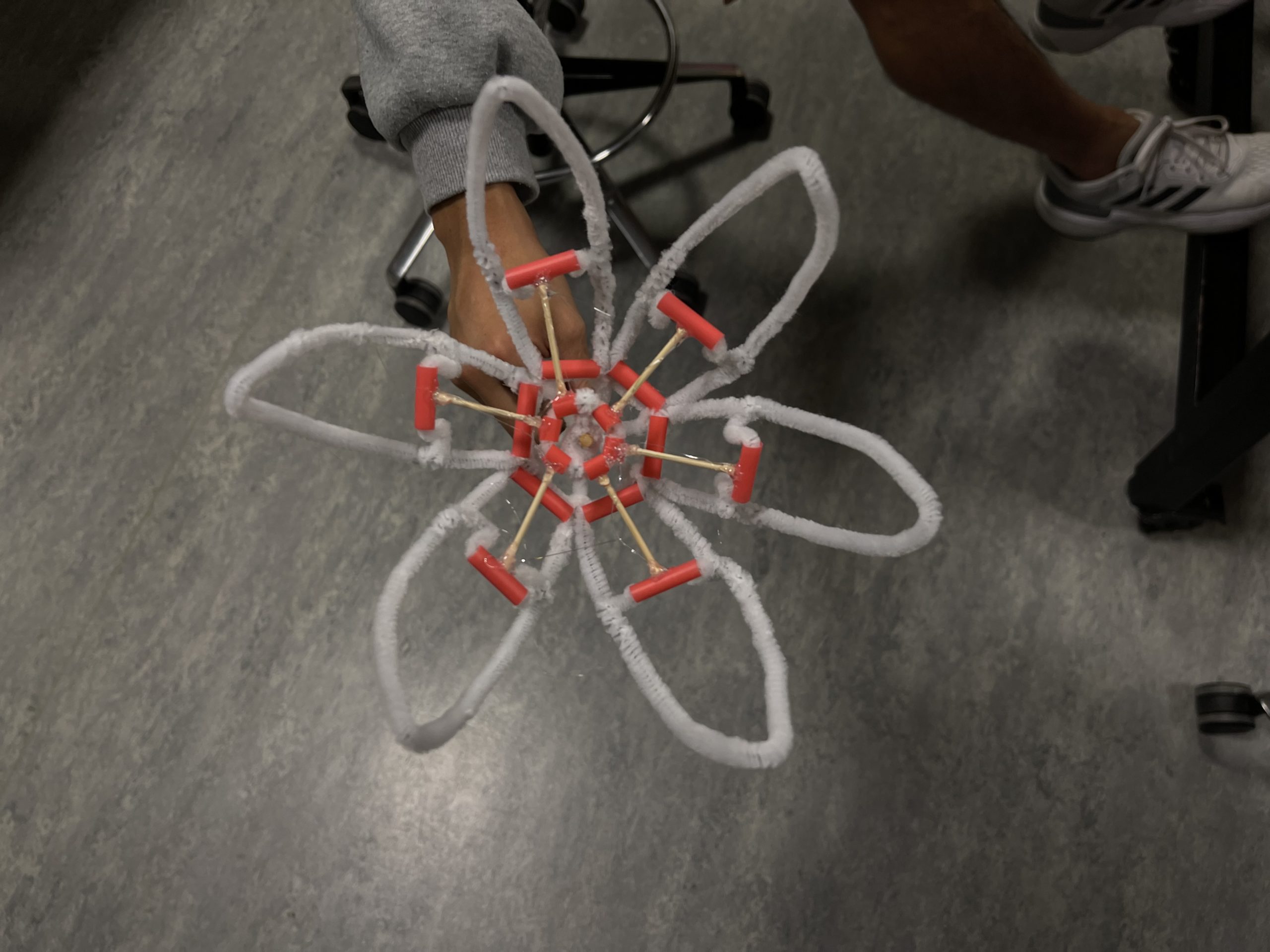
Link to Slides:
https://docs.google.com/presentation/d/1GVFxDdk208gUwB9femBQUSTbFcdlPazEznV7Jgg0_6Q/edit?usp=sharing
Project Theme and Main Idea
Our idea brings to life an oasis of light in the desert, which will invoke a sense of remembrance to what deserts once were. Deserts used to have lakes and were blooming with more life than they are today. The Oasis is a small colony of lotus flowers that bloom at night, and project blue lights onto the sand to represent water.
We often also forget the reliability and consistency that the desert offers to us. There is a lot of history that is in the sand the desert contains, it is rich and seems mysterious. This network of flowers aims to externalize the potential that the desert hides, whether be it in the form of oases or knowledge buried within its dunes.
The concept of a lotus flower being the central flower is a nod to this, to draw upon the past of the desert and what once was.The main feelings we want to portray with this project include comfort, safety and community.
Existing Projects/ Inspirations
Sketches
Our project interacts more with the environment rather than the viewer. The first interaction is through the disappearance of sunlight so once the sun sets the main flower blooms and lights up which triggers the second interaction which is when the rest of the smaller flowers light up due to them sensing light from the main flower therefore creating artificial “life” from artificial light. The blooming event is a “rare” occurrence because the flower only blooms once a day when the sun sets, emphasizing the idea of the scarcity of water in the desert.
- Almost like creating a “phenomena”
- Interaction: sunlight, unnatural light and the environment
Mechanics and Implementation Plans
The idea is to have a set of flowers, one central and the others periphery. The main flower, presume of the largest flower, will have a light sensor attached to it which allows it to know or detect low light environments. When it detects this, the flower will bloom open using motors that are attached to its petals. The specifics of the mechanism that opens the flower is still under debate, because there are various ways to make this work. Another idea we touched upon in our discussion of the project was the use of metal strips that flex when applied with an electrical charge. This creates a smooth opening of the petals which is something that we are looking to do.
The second set of flowers which are the periphery flowers, will activate also with light sensors. The difference between the periphery and the central flowers is that one set of flowers react to the absence of light–– the central flower ––while the other set of flowers react to the existence of light. These flowers like the central flower, bloom when the sensors activated. This will be performed using a similar method to the original flower.
The flowers all need to be connected to the main board, which may require the use of wires that extend beneath the sand and connect the flowers together. We will also have to make enclosures to house circuitry of each flower. This could also be a way to signify the concept of plants in the desert, which oftentimes have longer roots to absorb more water or to create a larger surface area from which water can be drawn.
Process and First Prototypes
We started the first prototype by taking inspiration from Jiri Praus “ Ever Blooming Mechanical Tulip” website (https://www.instructables.com/Ever-Blooming-Mechanical-Tulip/). We replicated the mechanics with different materials.
The materials we used were:
- pipe cleaners
- straw
- toothpicks
- wooden skewers.
- hot glue
The structure of the petal was made with the pipe cleaners and we used the straw for support and to connect the petals to the stem. We used a wooden skewer for the stem to setup the mechanism for opening and closing the flower. There is a ring at the top of the stem which is connected to the 6 petals using the toothpicks and cut straws.
Working Prototype
Conclusion, Next Steps
We want to 3D print the petals and start implementing the use of the servo motor (linked to the photoresistors), add neopixels and photo-resistors to finalize the work. To do the 3D printing and design, we plan on using Fusion360.


